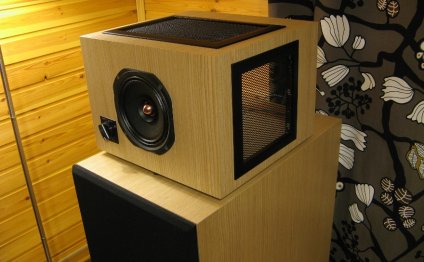
Broadband Acoustic
As is well known, all acoustic systems (AS) can be divided into three groups:
(1). Active multipolity (from 2nd and above)/active filtering.
In this AU, the strips are to be split up to the U.S., and every escalator only reinforces its frequency band and loads on one/stop head group.
In many ways, this is the most qualitative way of implementation, but in practice the road (required by number of UMs by number of lanes) requires individual construction and, in the case of an active acoustic with which the UM is inside, is difficult to modernize.
2. Passive multipolar AU.
I think it's the most remote AU type today. In most of these 2nd and 3rd strip systems, they are connected to the outlet of the power-energy, and the head section care is taken by a passive filter built into the AU.
The main problem of multipolo acoustics, in my view, is that she has this filter herself. The passive crossover, apart from performing its direct task (by giving each head of its range), adds nothing good to the sound. PFCs, impulse system characteristics, serious distortions, etc. However, despite the availability of a variety of filter design options, any of these options is essentially a compromise, while improving one but worsening the other (Chobel ' s classic example).
The total sounding of such an AU is either a flammable purified sound, or an uninterested, obscure or a combination of one and the other. However, because of the convenience, simplicity and accessibility, as well as the actual absence of an alternative, this type of AU, as I have noted, has so far the greatest space.
(3). Broadband AU.
The oldest structure in which there is no strip separation and the emitter is a broadband head designed to transmit the entire frequency range.
Broadband AU has its own advantages and minus compared to multipolar systems.
Mines include the unevenness of AFCs (in general, the unpleasant release of KGz 2-3, the low and the " low " HF), the high medium/high frequency and medium/high frequency modulation low by diffuse fluxes.
However, despite its clear and visible shortcomings, one head of design finds a decent number of its fans. Its benefits include the absence of phase distortions, the closest design to the point source and the absence of elemental distortions (i.e. the filter itself is missing). In addition, Broadband AU design is easier than a crossover is not required.active or passive) There's a magical side. ♪ ♪
I was interested in such a design (previously done/improved by the normal passive AU) and I made a simple acoustic on Sonia's paper broadband, more of a fascinating purpose (and how it sounds on one head). A little ten-litre plumbing, with the front F.I. yesterday took his place for a while on my desk.
The sound of such a design gave me a little tricky. From the beginning, there have been apparent problems with the thin balance-- no PM, no PM, no midway is not even-- a clearly curved sound. In addition, the worn head is incorrectly detailed, some of the sounds are difficult to deal with, and some are not heard at all (as they say, the problem of detail is relevant for broadband systems). In sum, it's a rather mediocre sound, which reminds me of a radio rather than an initial Hi-Fi.
But on the other hand, I didn't notice, I moved from sound analysis to music audition in a while. Become for the composer, listen to an hour instead of planned 10 to 15 minutes. And then there was a very interesting feeling that I wanted to sing for the artist, try to play the accord behind the instrument - though both after the usual ear of Scan Speech improvised - it was hard to deal with. Turning off the machine, he went in a very positive mood - it felt like he'd heard something that he'd never heard before, which is, it's hard to say.
Share this Post
Related posts
How Do You Make A Phone Plug
Do you need to buy a gadget when there is room for a device collected from hand-held equipment? Those who have at least initial…
Read MoreHow Do You Make A Cologne Booster
Many people would like to have an audio system 5.1 at home, but for the frequent price of such a force, it s pretty big…
Read More









